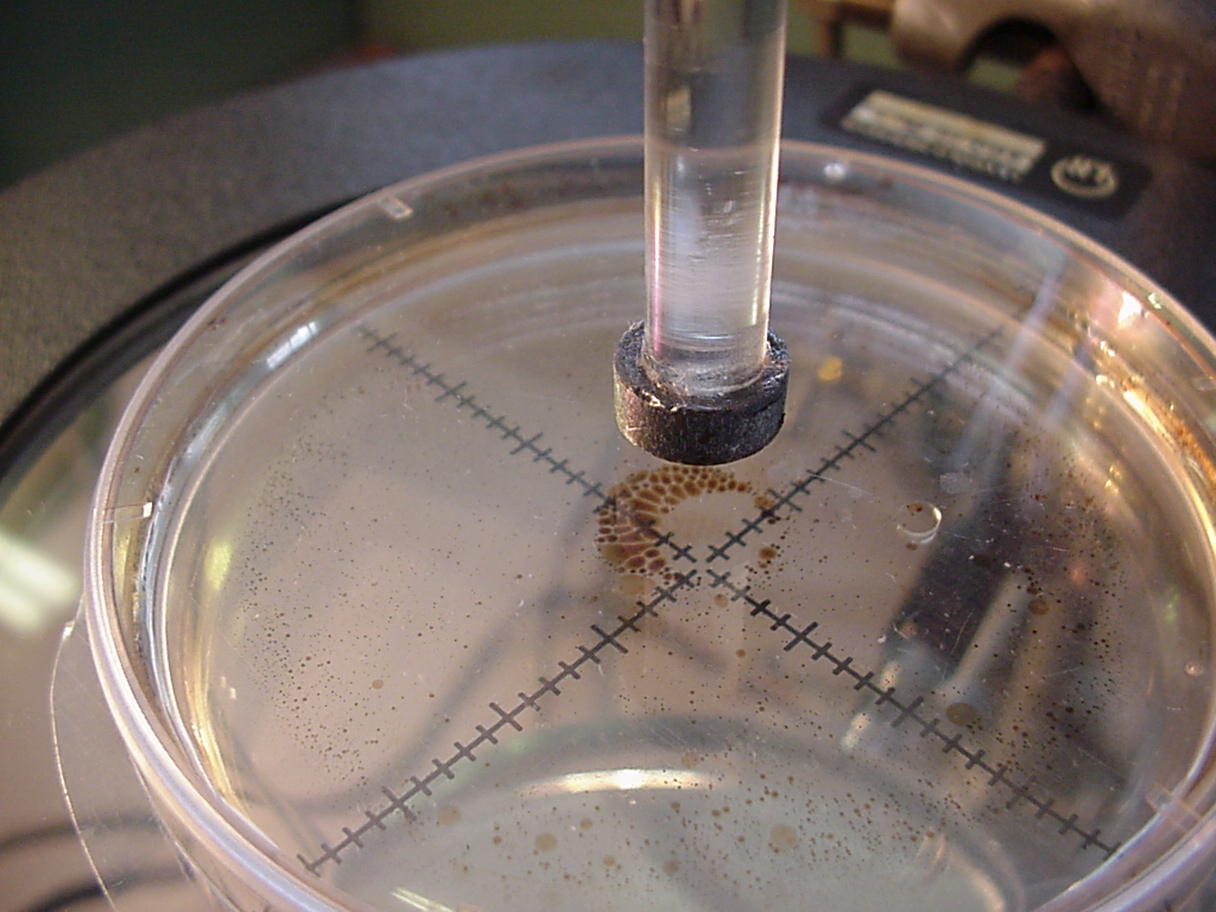Here’s an example of some physics that doesn’t quite seem to work out.
Magnets attract iron. Yes? So what happens when you place a drop of ferrofluid (which is basically an oil whose molecules have been laced with iron atoms) on the surface of water and lower a maget towards it. The oil will flow on top of the water and accumulate under the magnet, since that is the closest it can get.
Well, no. As the picture shows, what happens is the fluid accumulates in a ring, which is devoid of fluid near the centre – the very place that is closest to the magnet.
Why? It’s because each molecule of fluid doesn’t just feel the magnetic field from the magnet – it feels the field due to each other molecule of fluid. And under the magnet this field acts to rip the drop apart – each molecule repels the other molecules, so the drop cannot remain intact there. It’s another example of where the whole is not equal to the sum of its parts – sure, every oil molecule, if it were the only one, would head underneath the magnet, but put them together and the interactions between them are important, and we end up with none there.
Often in physics this kind of interaction can result in chaos – but in the case of the ferrofluid, we get a nice ring structure. The full explanation is a little complicated – but for those interested it’s in BJ Ackerson and AN Novy, American Journal of Physics vol 69(5) p614 (2001).
